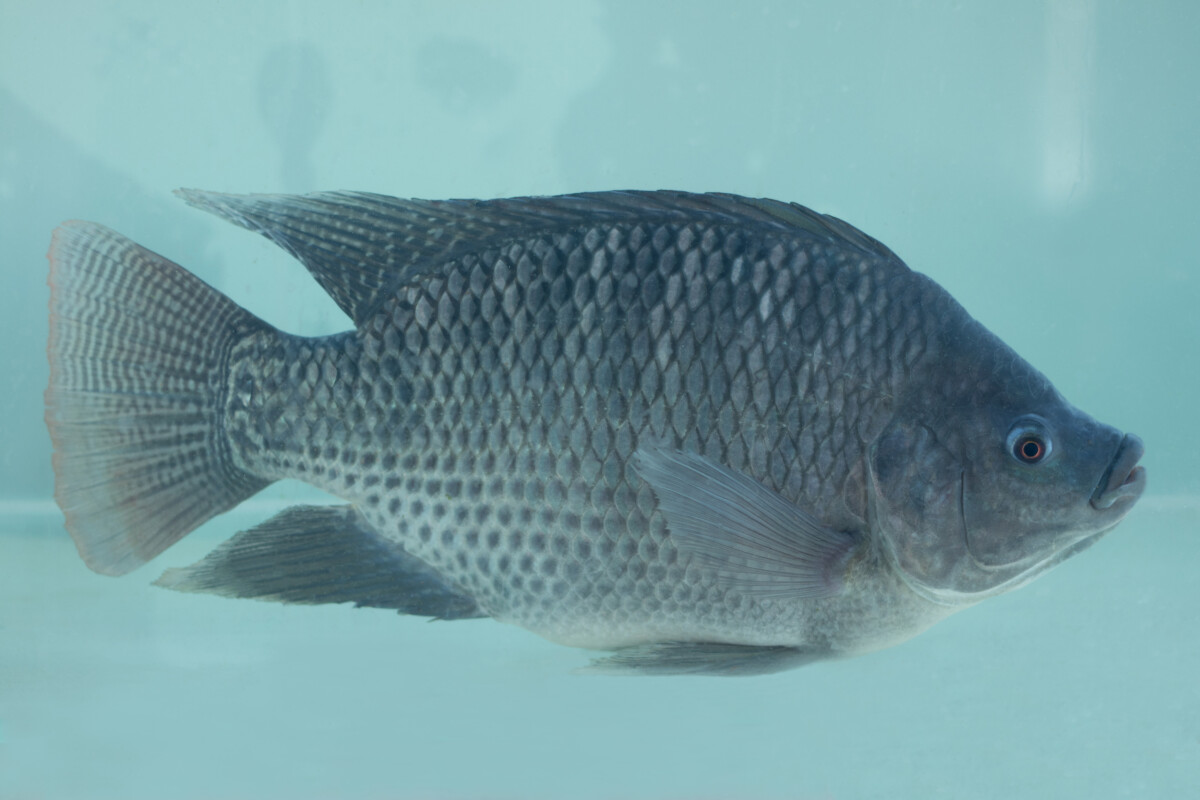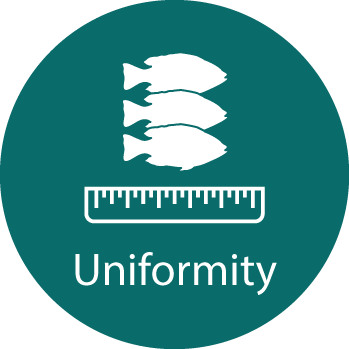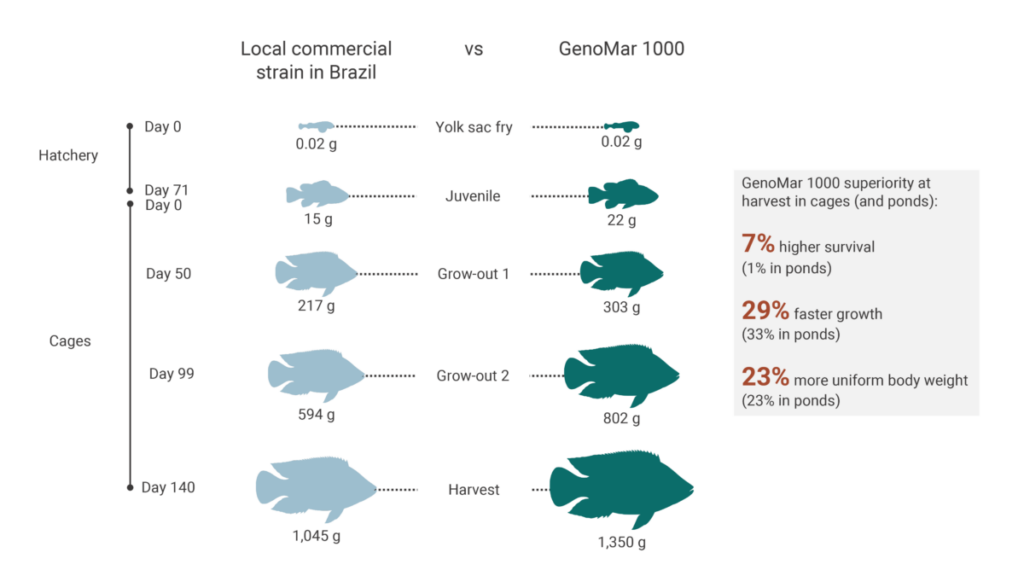
A fast-growing and resilient tilapia genetically selected for high yield in aquaculture

GenoMar 1000 is a genetically selected strain of tilapia with first-class growth and fillet yield traits supported by good health and survival traits
Further reading about our genetic progress:
Evidence of selection response and increased profitability of a new generation commercial tilapia fingerlings (Aqua Culture Asia Pacific, March/April 2023)
Product documentation from research-based trials:
Impact of genetics in tilapia production – A comparative trial between two strains in Brazil (PDF)
– Also published at The Fish Site (May 2024) including a video summary of the trial
Proof of performance

More production cycles per year – better capacity utilization
GenoMar 1000 has a proven growth rate from 22 g to 1,000 g in 114 days in cages, and 121 days in ponds. These results are based on a field trial conducted under commercial farming conditions in Brazil (Figure 1). This superior growth leads to increased productivity as numbers of production cycles per year can be increased (Table 1).
Reduced environmental and disease risks
The fast growth entails a reduction in the number of farming days and less exposure time to infections and environmental risks.

Increased survival throughout the life of the fish
GenoMar 1000 has demonstrated an average survival rate from stocking to harvest of 95.2% (22 g – 1350 g) in cages and 93.4% (22 g – 1,196 g) in ponds in the referred Brazilian field trial (Figure 1).
Animal welfare
The high survival rate of GenoMar 1000 reflects improved animal welfare through reduced mortality and enhanced health.

Uniformity
GenoMar 1000 has shown high uniformity at harvest in cages and ponds. At a target weight of 1000 g, 74% of the fish in cages and 75% of the fish in ponds were within the weight category 850-1150 g (Figure 1).

Table 1. Key performance indicators from farming of stocked 22 g juveniles until 1,000 g of body weight in a field trial in Brazil. The increased annual profitability is compared to a local commercial strain.

Figure 1. Growth development, final survival and uniformity of GenoMar 1000 compared to a local commercial strain in a field trial in Brazil. The results presented are an average of two cages with a 50/50 mix of the two strains (common garden design), with individually tagged fish. More details about this trial can be found here: https://genomar.com/wp-content/uploads/2024/06/Impact-of-genetics-in-tilapia-production.pdf
Product specifications
GenoMar delivers genetically improved fingerlings and juveniles to farmers for stocking directly into ponds and cages. To achieve the best possible growth rate, the fish is produced as all male with at least 98% males.
Available sizes delivered from our hatcheries:
Fingerlings: 0.25-2 grams
Juveniles: 20-40 grams
Time of delivery:
Fingerlings are supplied year-round.
